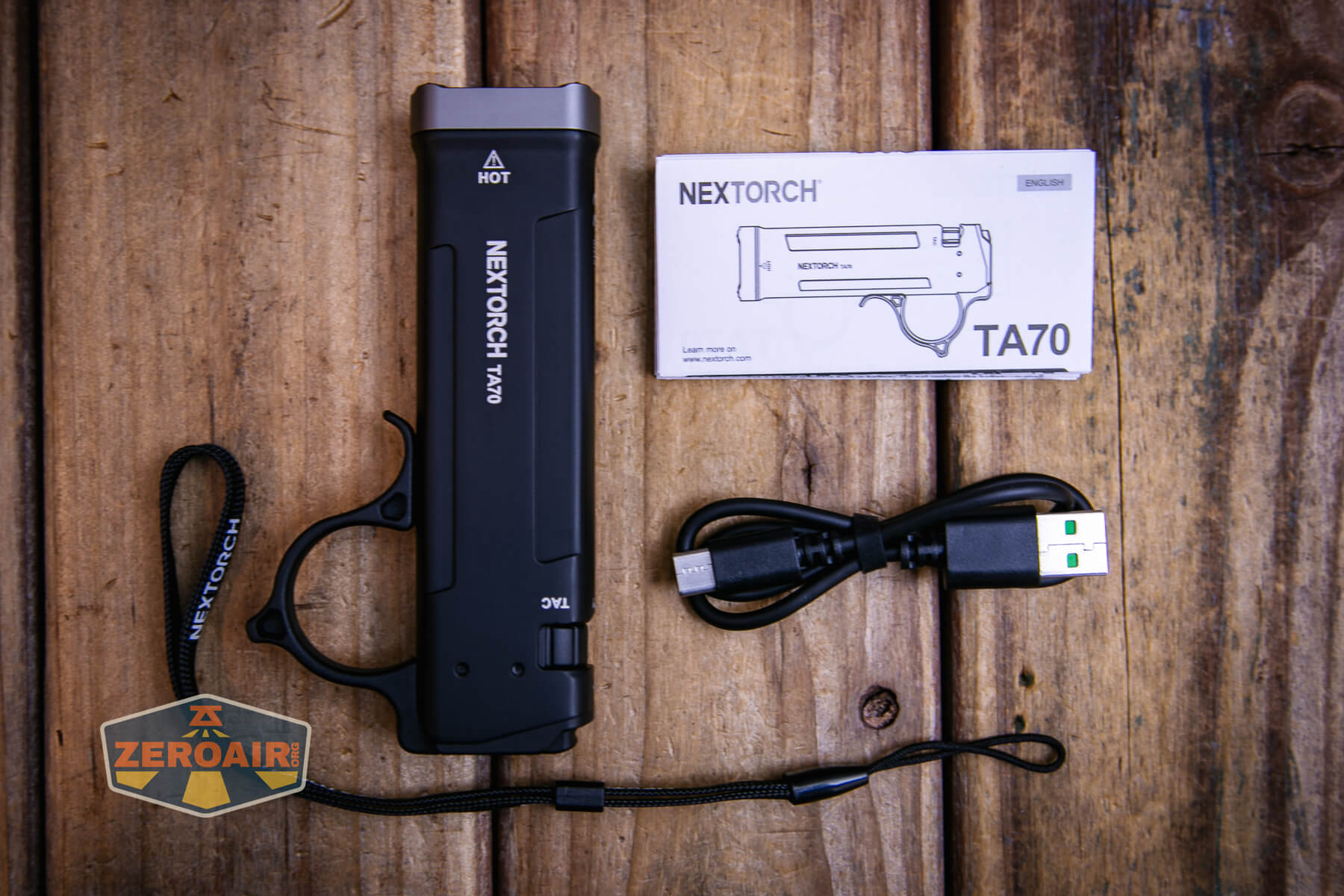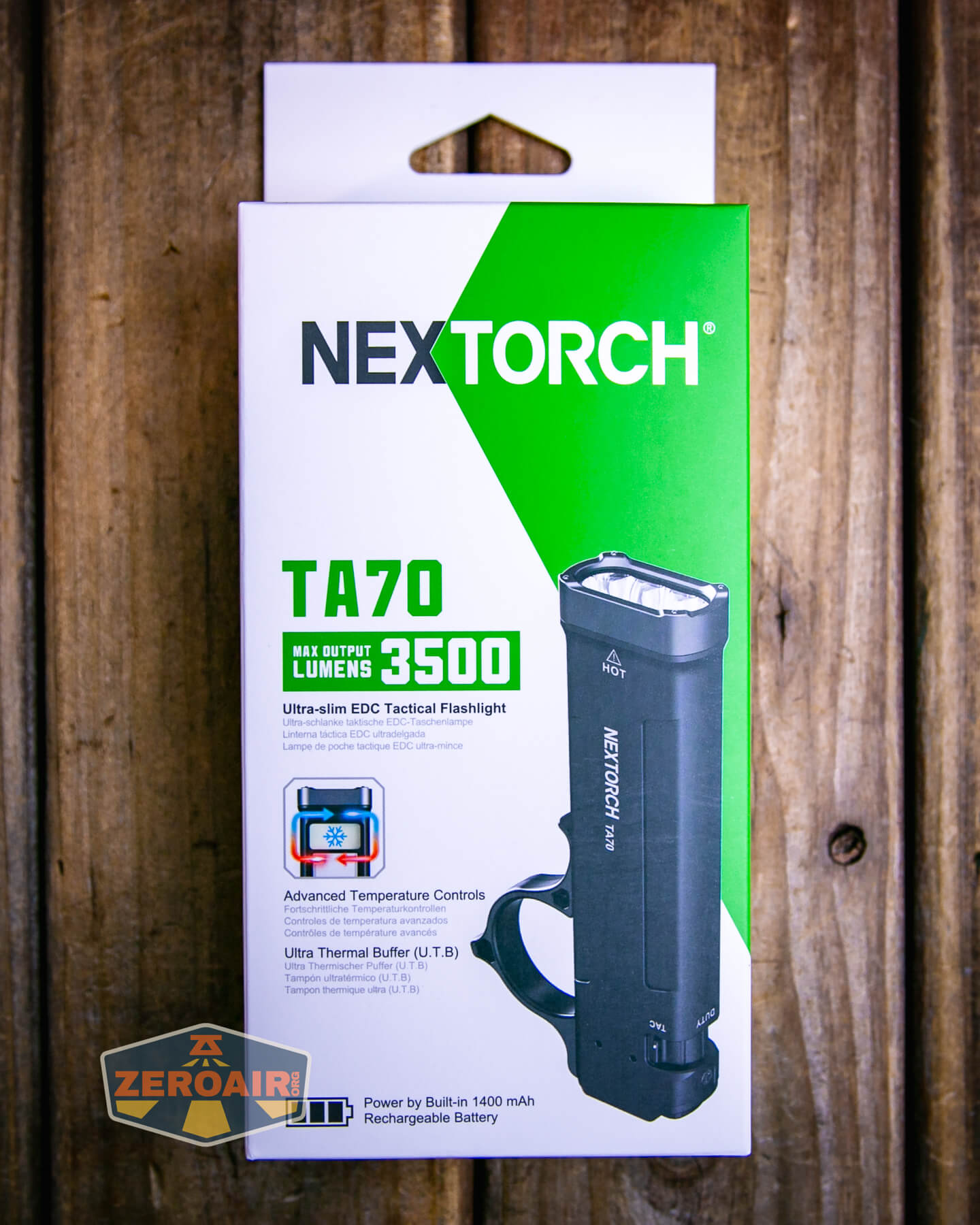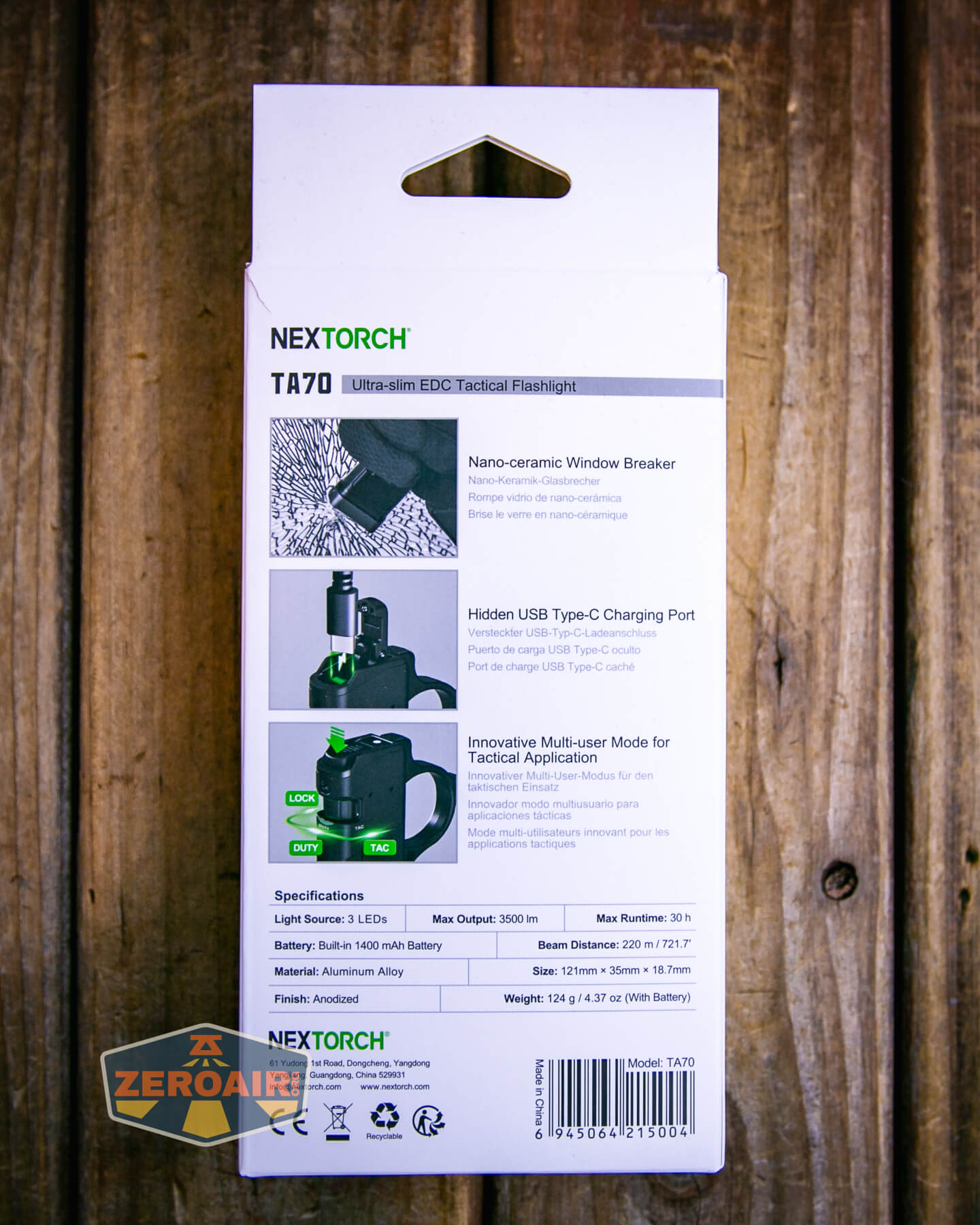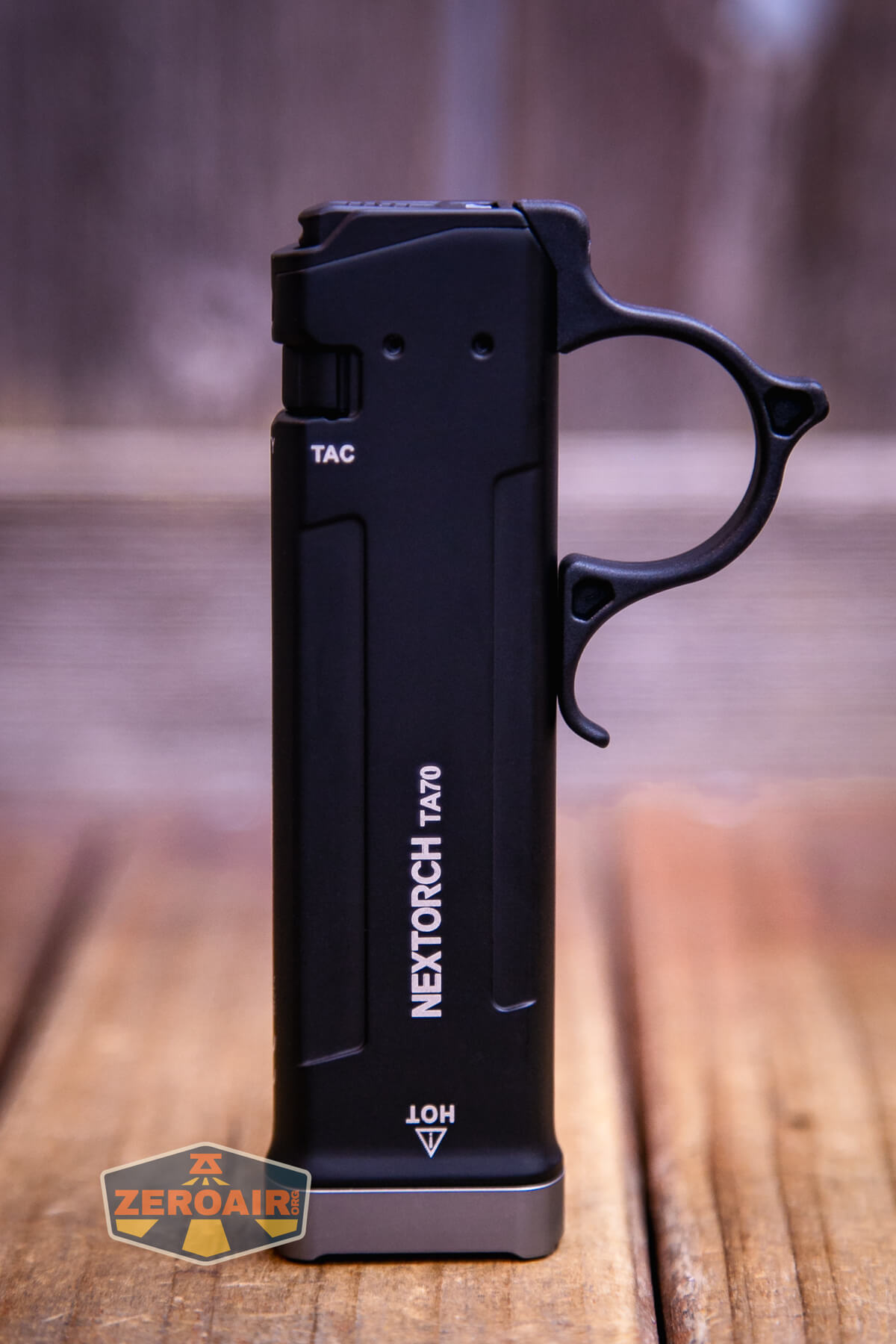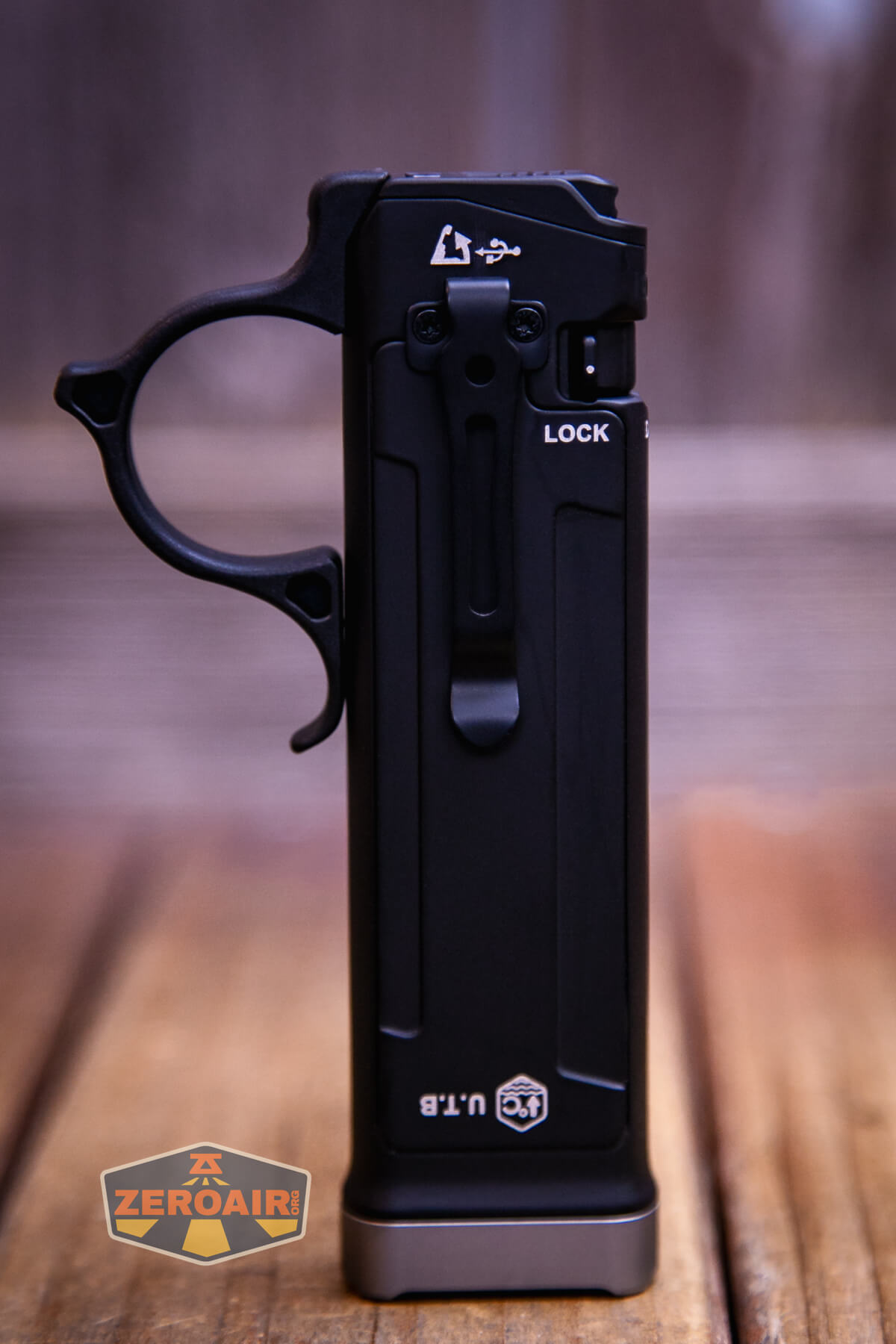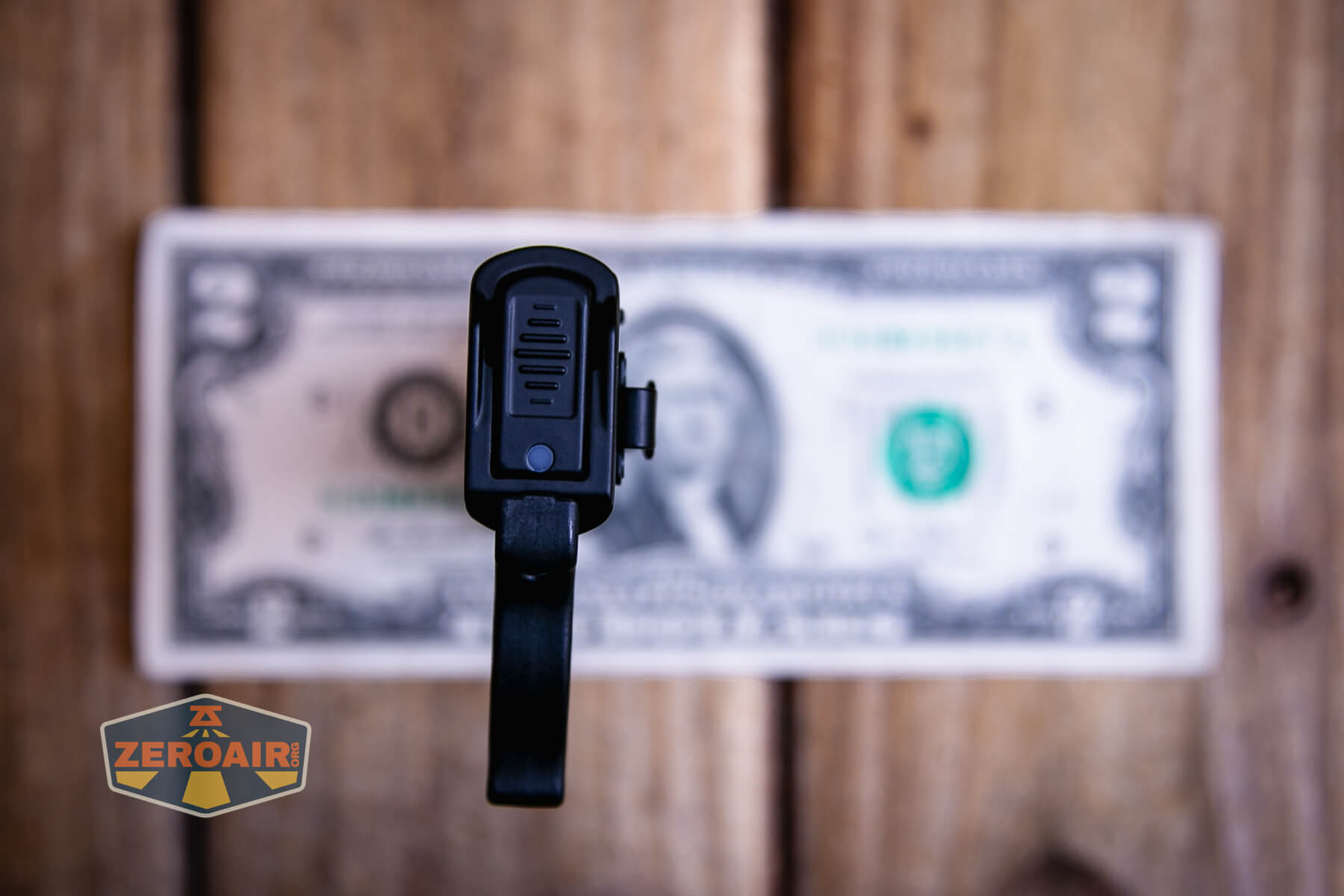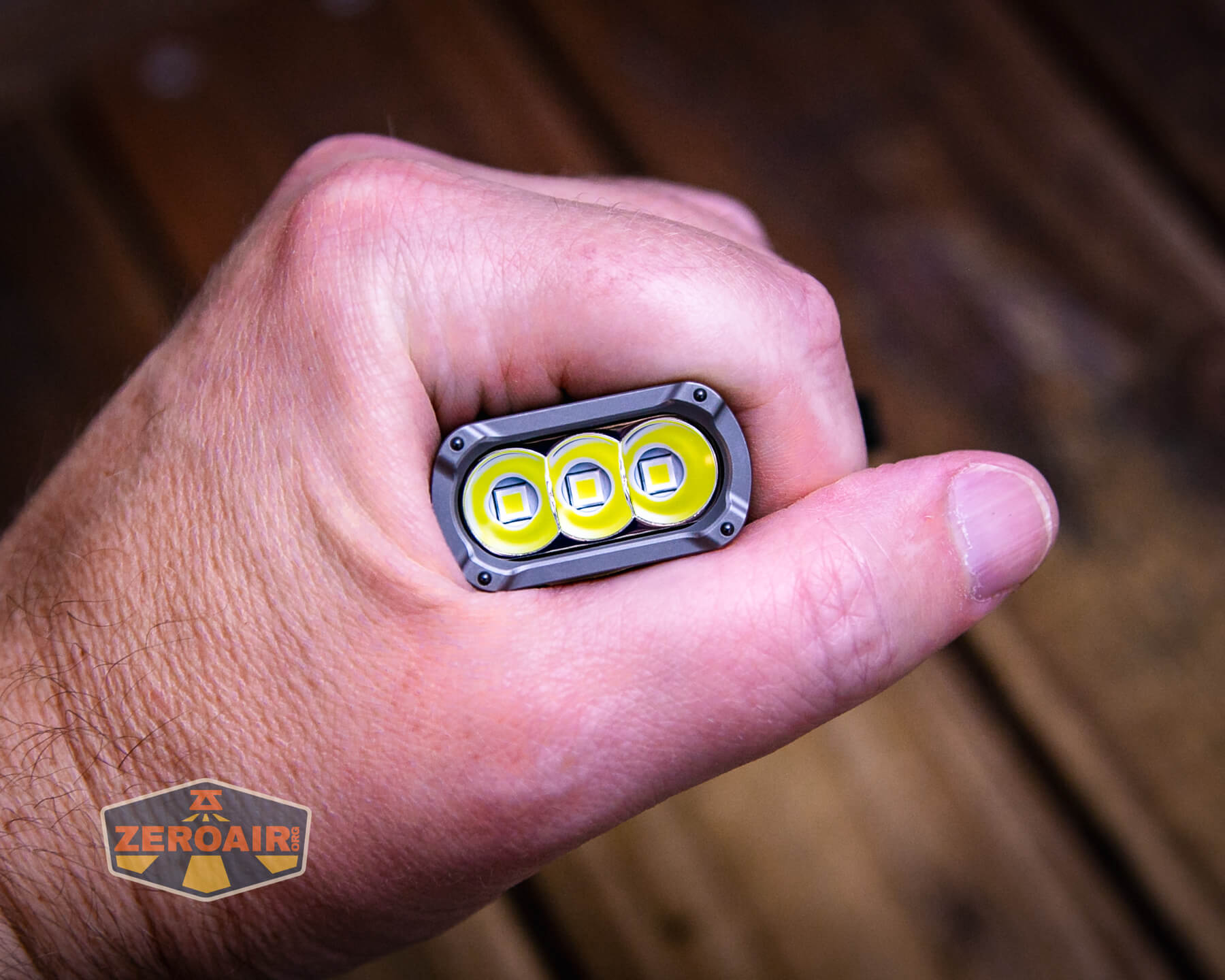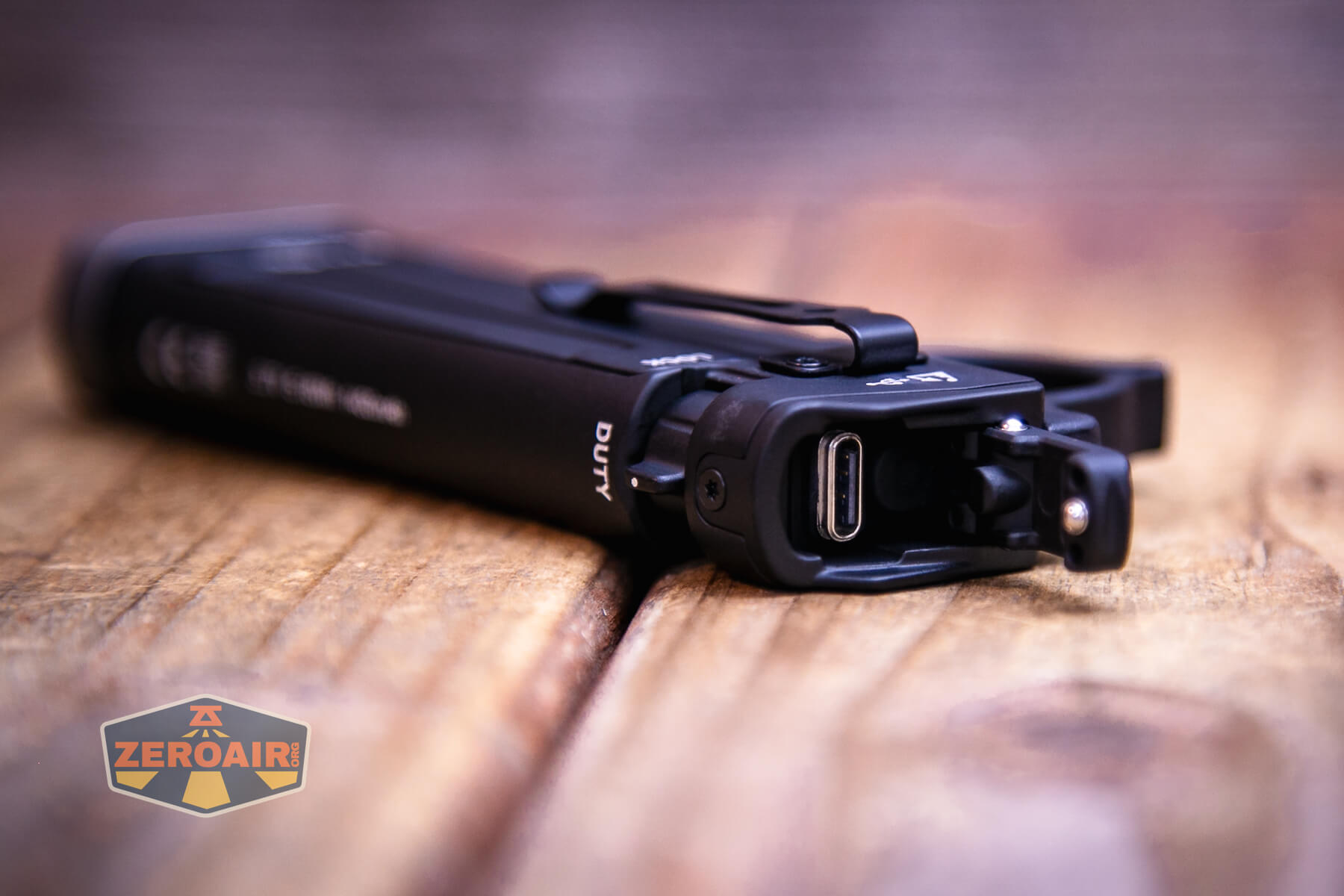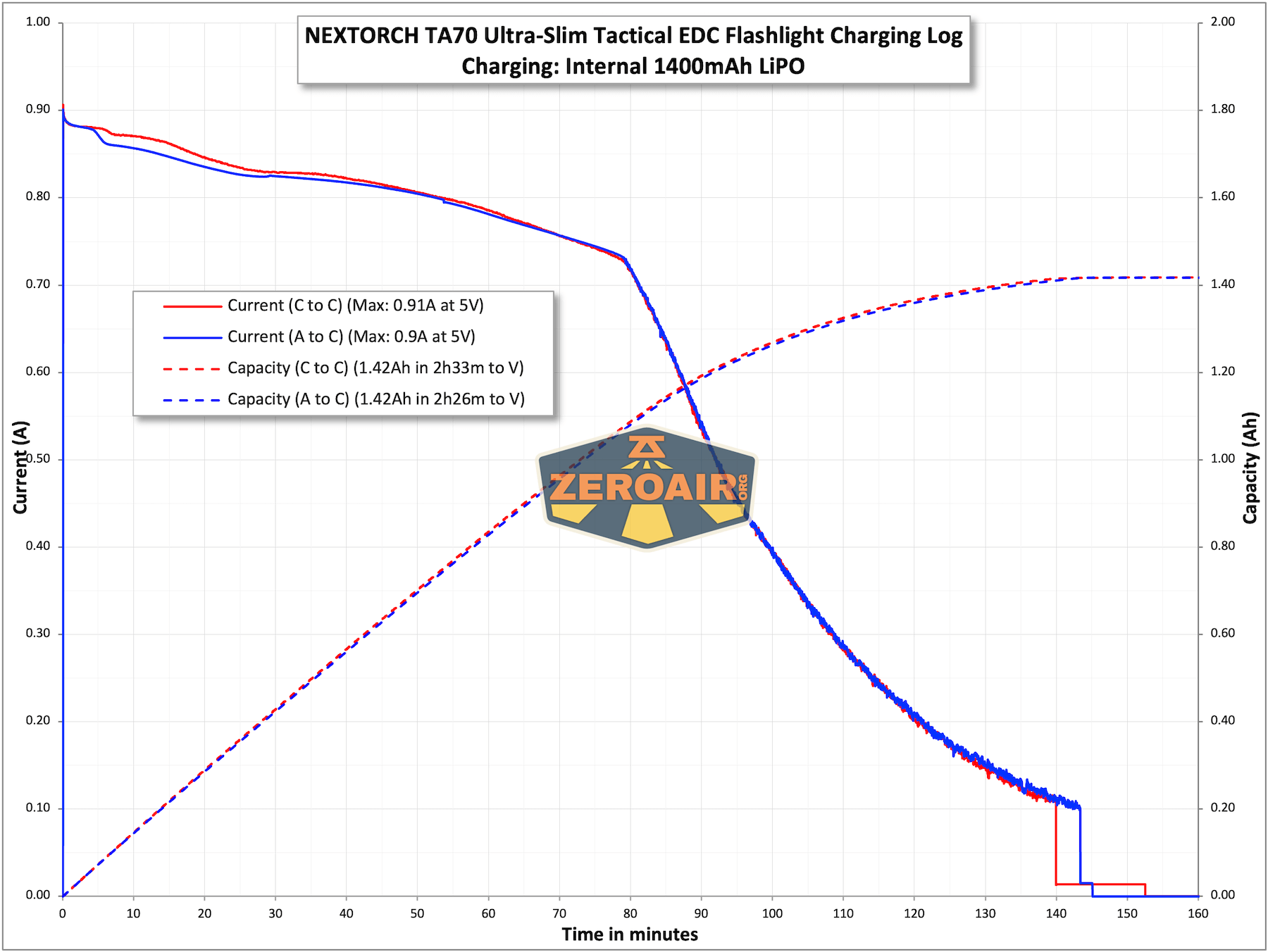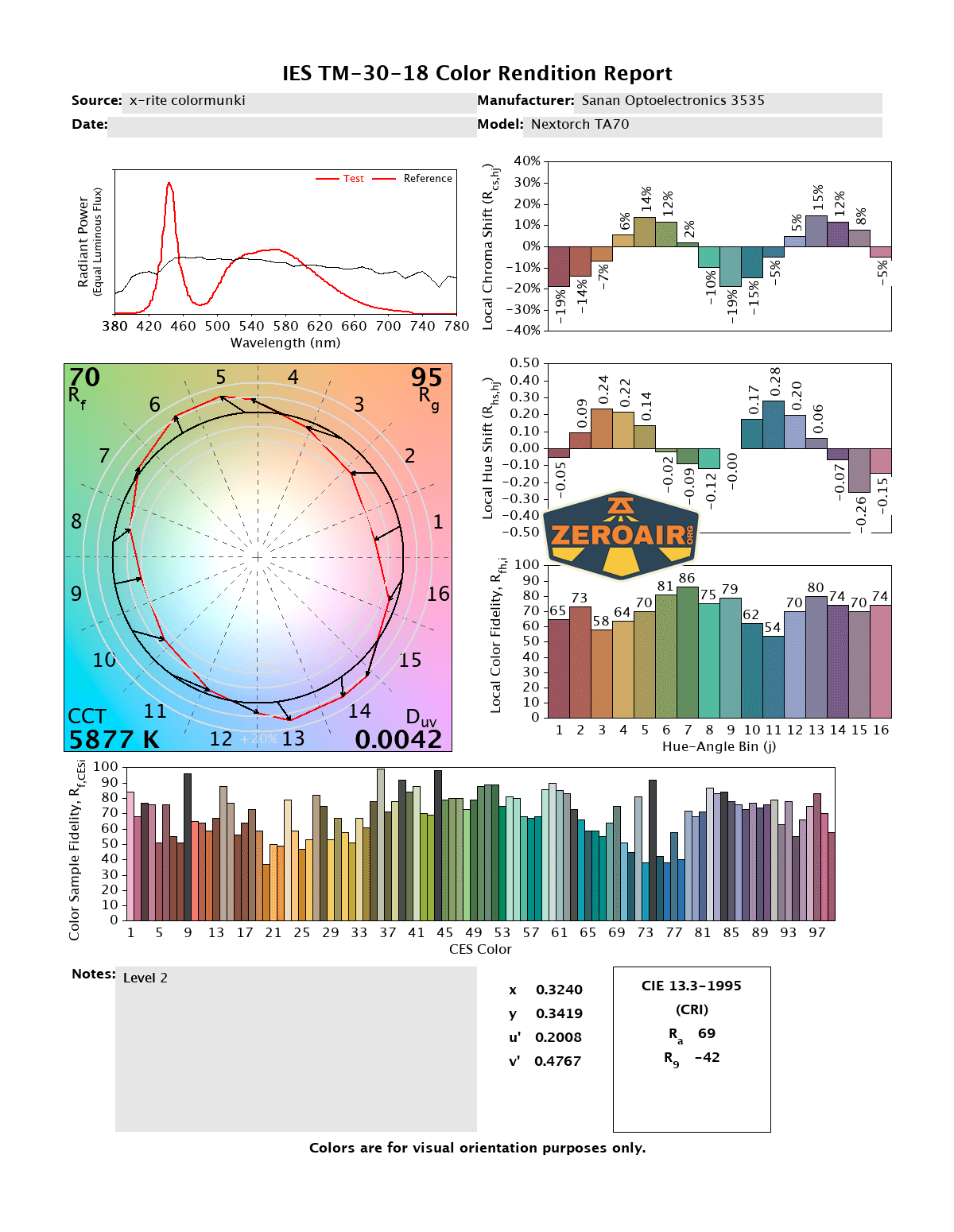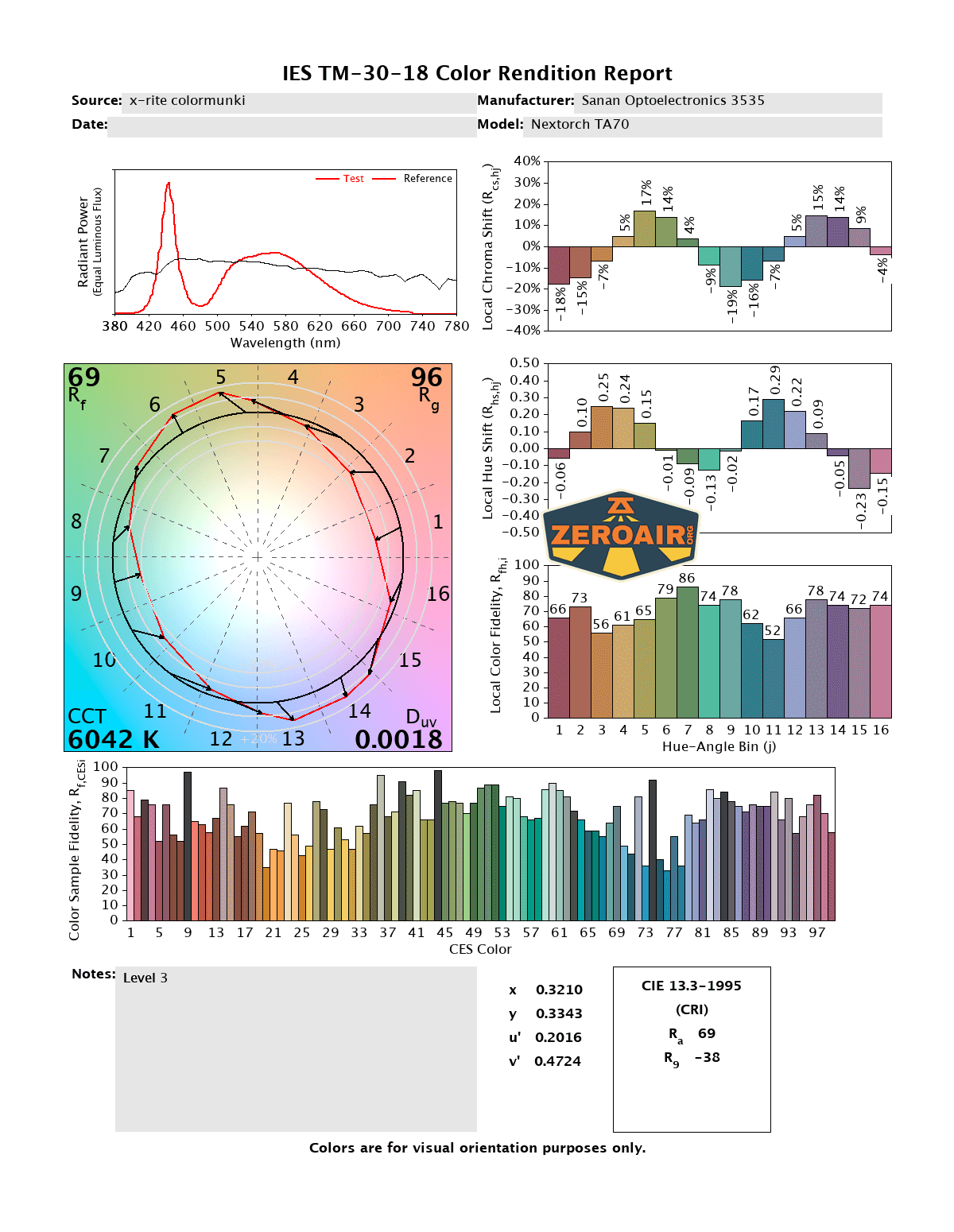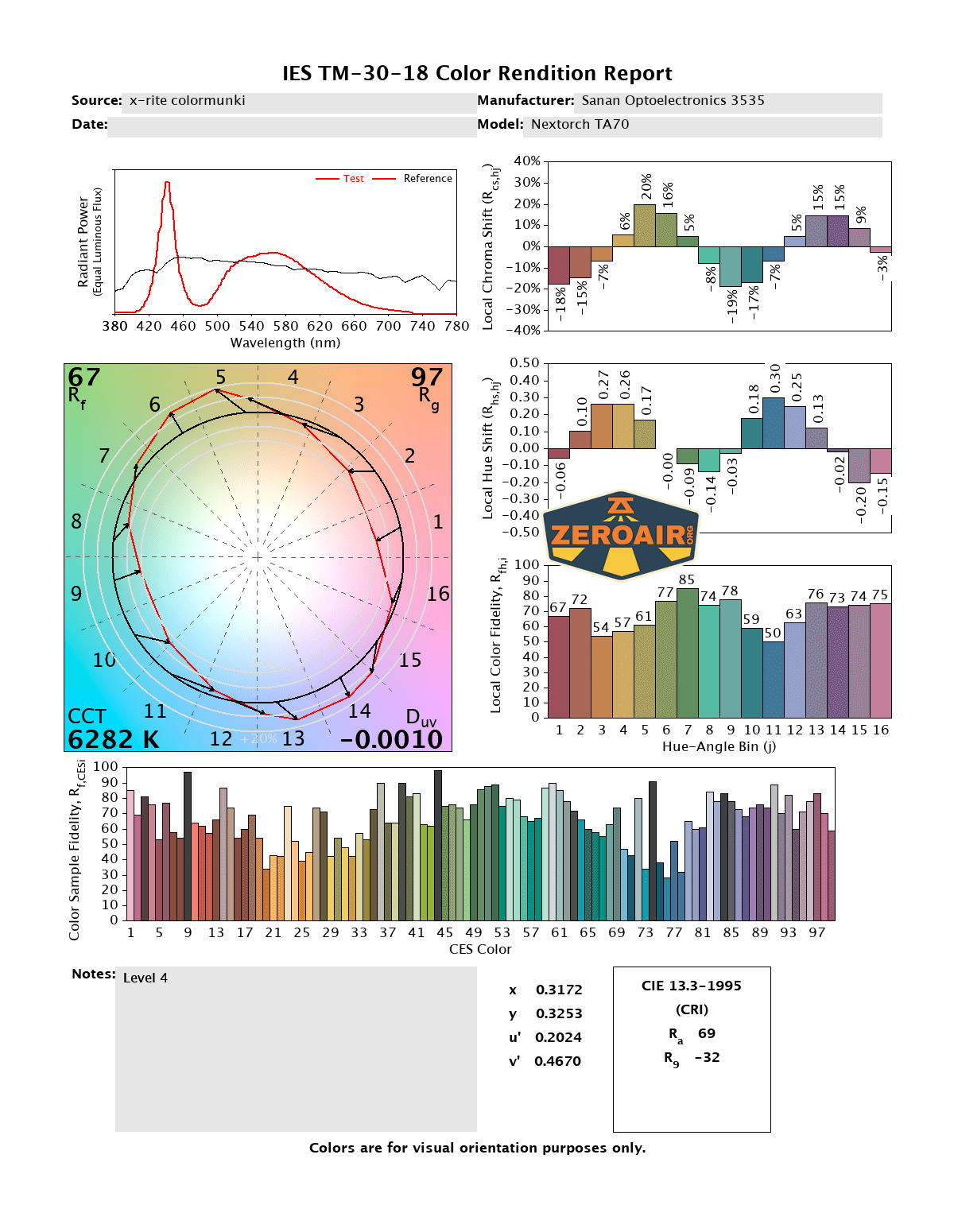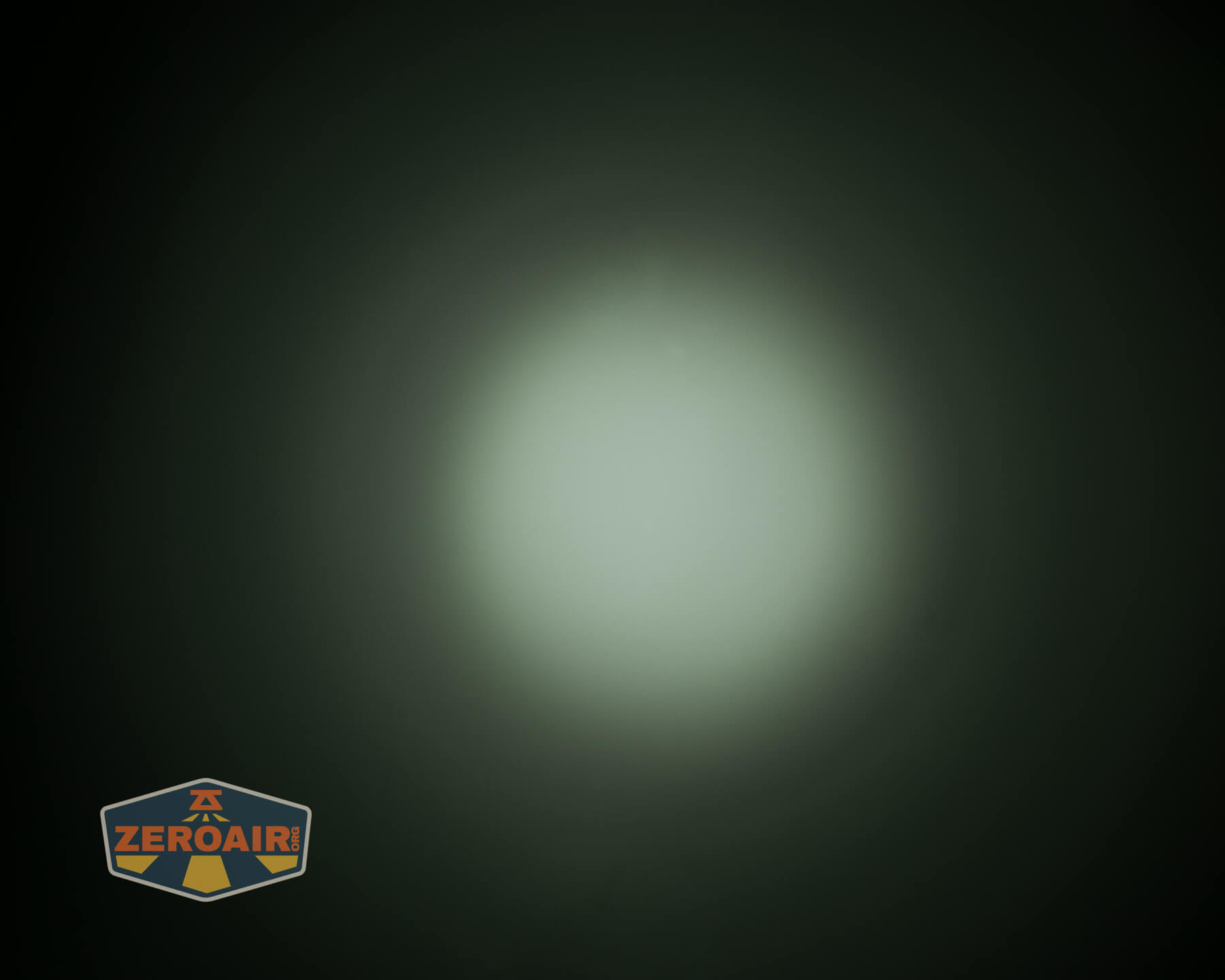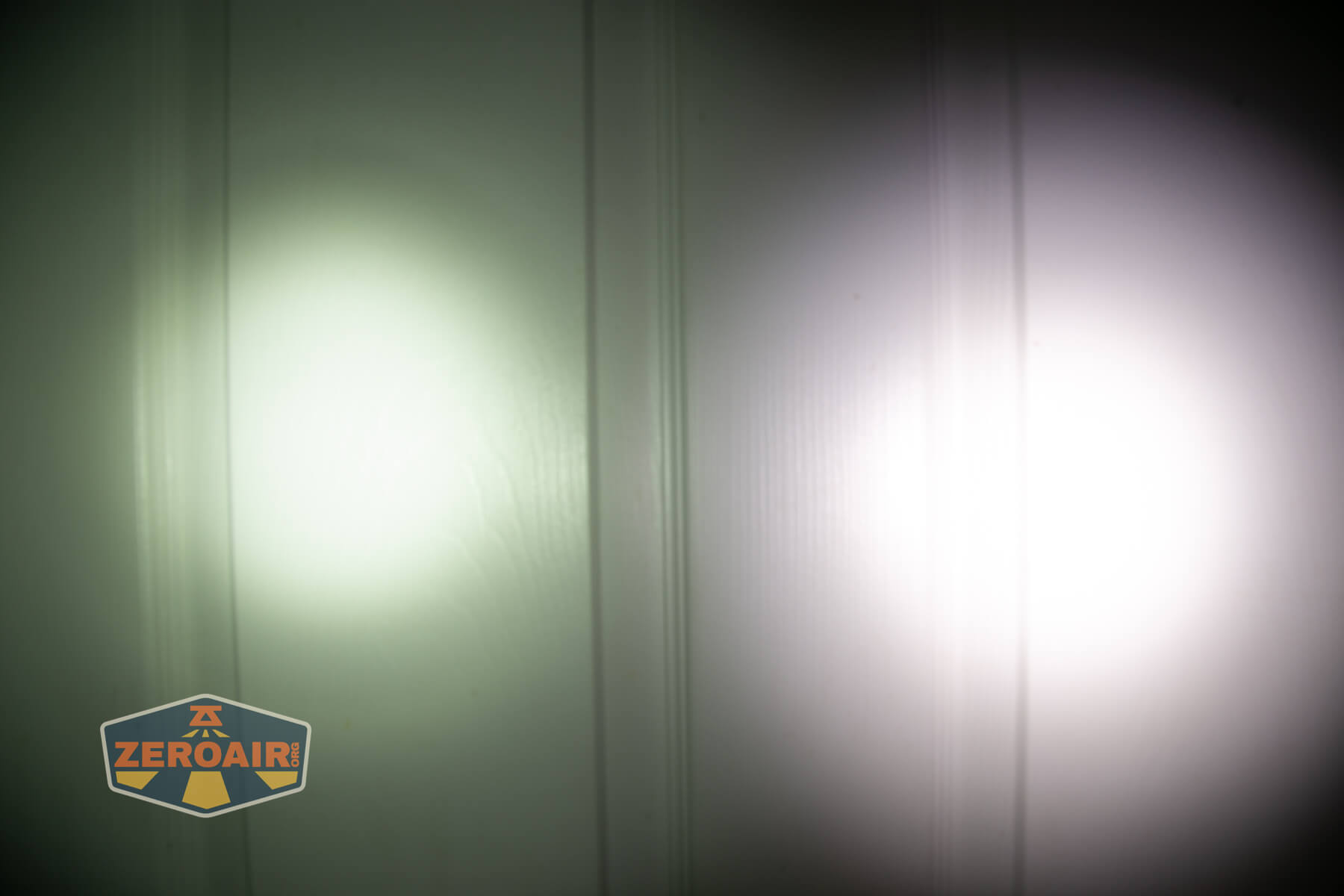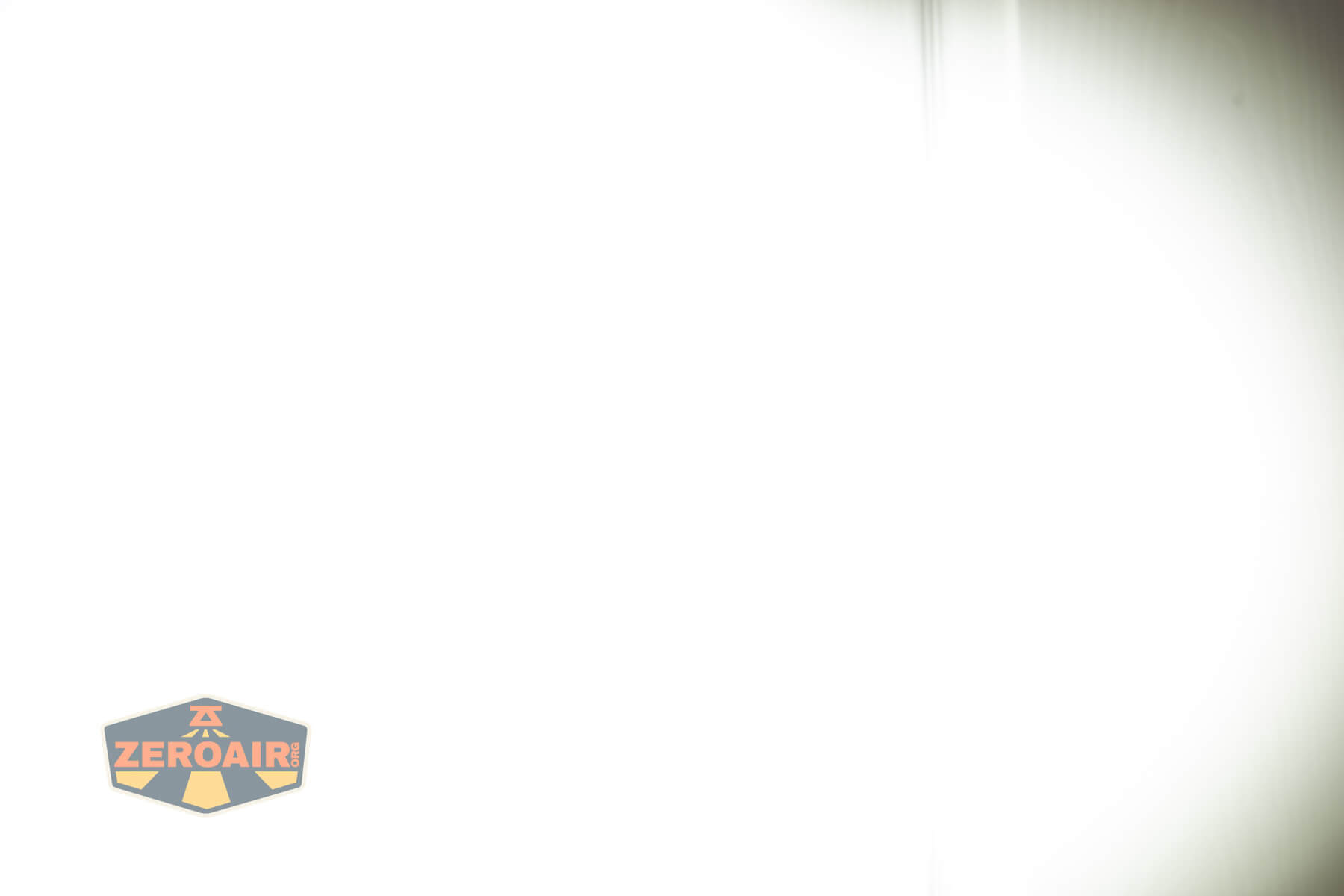Nextorch TA70 Ultra-Slim Tactical EDC Flashlight Review
The Nextorch TA70 Ultra-Slim Tactical EDC flashlight has a built-in tactical grip, a paddle switch/USB-C charging port cover, and three novel emitters. Read on!
Official Specs and Features
Here’s a referral link to the Nextorch TA70 Ultra-Slim Tactical EDC flashlight product page.
Versions
There is only one version of the Nextorch TA70 Ultra-Slim Tactical EDC flashlight.
Price
The Nextorch TA70 Ultra-Slim Tactical EDC flashlight sells for $119.99 and is available now!
What’s Included
- Nextorch TA70 Ultra-Slim Tactical EDC flashlight
- Charging cable
- Lanyard
- Manual
Package and Manual
Build Quality and Disassembly
The Nextorch TA70 Ultra-Slim Tactical EDC flashlight is (I think) Nextorch’s first flat light in this style. It brings something interesting to the table – a built-in tactical grip ring!
The back – specifically the pocket clip – is held in place by two screws. Some product photos lead me to believe the light could be taken apart by removing those two screws, but I did not try that. In any case, the light is not intended to be disassembled, and the battery appears hard-wired.
Size and Comps
Dimensions: 121 mm x 35 mm x 18.7 mm
Weight: 124g (including battery)
If the flashlight can headstand, I’ll show it here. If it can tailstand, I’ll also show that here!
Here’s the test light with the venerable Convoy S2+. The version below is a custom laser-engraved Convoy S2+ host by GadgetConnections.com. I did a full post on an engraved orange host right here! Or go straight to GadgetConnections.com to buy your Convoy S2+ now!
Also in the photo above, my Standard Reference Material (SRM) flashlight is the Hanko Machine Works Trident, an 18350 light. While I have not reviewed or tested the Gunner Grip version seen here, I have tested a Hanko Machine Works Trident Total Tesseract in brass. I love the Trident, and it’s a striking contrast to the inexpensive Convoy S2+, another great SRM.
Retention and Carry
The Nextorch TA70 Ultra-Slim Tactical EDC flashlight ships with a tactical grip ring attached. Also attached from the factory is this pocket clip. This clip provides reasonably deep carry and is very high quality.
The tactical grip is held in place by just one screw.
A lanyard is included. The only place to attach this lanyard is on the pocket clip.
Power and Runtime
The Nextorch TA70 Ultra-Slim Tactical EDC flashlight has a built-in 1400mAh LiPO battery. It’s not really replaceable, and certainly not field-swappable.
The highest level is not a steady mode. It’s only momentary. I tested momentary activation a bunch of times just to see what it’d look like, and impressively, it holds near-initial output for most of the following activations. I don’t love that this is called a “3500 lumen” flashlight, since that output isn’t maintainedfor more than 30 seconds, and that output is not available for more than momentary.
On high, the output is much more reasonable, and still quite high!
The temperature lines in these charts are included as general context, not precise measurements. The values represent the range (min to max) during testing, but should not be taken as exact readings. Temperature sensors are attached however feasible and not always on the bezel or hottest spot (assuming that can even be clearly defined). Even with ideal placement, too many variables affect temperature to definitively state a specific max value.
One more thing about power – on the paddle switch, there’s a little power indicator! If you tap the switch while the light is off, the power indicator will light for a few seconds. It indicates as follows:
Blue: 75-100%
Blue flashing: 50-75%
Red: 25-50%
Red flashing: 0-25%
Charging
The Nextorch TA70 Ultra-Slim Tactical EDC flashlight offers a USB-C charging port with a fairly novel charging cover. The cover is the paddle switch! Technically, the paddle just presses a button that’s closer to the hinge – you can’t see it below, but it’s in that dark area to the right of the USB-C port.
Nextorch includes a USB to USB-C charging cable.
Charging looks fine, at around 0.9A, and it completes in about 2.5 hours.
Modes and Currents
| Mode | Mode Claimed Output (lm) | Claimed Runtime | Measured Lumens |
|---|---|---|---|
| Tactical Momentary | 3500 | – | 3006 (0s) 2163 (30s) |
| High | 1300 | 2h | 1143 (0s) 1139 (30s) |
| Medium | 300 | 3h | 266 |
| Low | 28 | 30h | 17 |
Pulse Width Modulation
None of the modes use PWM!
Click here to see a “baseline” – a chart with almost no light hitting the sensor.
Then there’s the Ultrafire WF-602C flashlight, which has some of the worst PWM I’ve seen. It’s so bad that I used a post about it to explain PWM! Here are multiple timescales (10ms, 5ms, 2ms, 1ms, 0.5ms, 0.2ms) to make comparing this “worst” PWM light to the test light easier. That post also explains why I didn’t test the WF-602C at the usual 50us scale.
User Interface and Operation
There are two ways to interact with the Nextorch TA70 Ultra-Slim Tactical EDC flashlight. Both are required for the desired outcome. First, you set this selector switch to Lock, Duty, or Tactical. Below, the switch is in duty mode.
After that, you utilize the paddle switch.
The paddle switch is a joy to use. It has such a pleasant action! It feels a little two-stagey, too!
Here’s a user interface table!
| State | Action | Result |
|---|---|---|
| Lock Off | Click or tap switch | Battery indicator |
| Duty Off | Tap switch | Momentary (they call this “Preview mode” – where you check what mode you could turn the light on to by clicking) |
| Duty Off | Click switch | On (Low) |
| Low | Tap switch | Mode advance (ascending, LMH) |
| On | Click switch | Off |
| Tac Off | Tap switch | Momentary highest mode |
| Tac Off | Fully press | Momentary Strobe |
LED and Beam
These emitters are Sanan Optoelectronics 3535, according to Tactical Grizzly. I don’t know that emitter, but you can check the characterization below. It’s a nice, smallish, domeless emitter, and Nextorch has used tiny reflectors to go with them. Technically, this is a triple, but these are all in a line!
The bezel has glass-breaking balls and a little bit of contour, too.
LED Color Report (CRI and CCT)
The CCT here is high – cool white, and the CRI is low. Neither of those should be super surprising, given that this is a small light producing over 3000 lumens. Still, a neutral white CCT and higher (if not “high”) CRI would be fantastic in this format! (Because it’s a very good format!!)
CCT (Correlated Color Temperature) refers to the measurement of the color appearance of light, expressed in Kelvins (K), which indicates whether the light is warm (yellowish) or cool (bluish). A lower CCT (below 3000K) is considered warm light, while a higher CCT (above 5000K) gives cooler, bluish light.
CRI (Color Rendering Index) is a measure of how accurately a light source renders colors in comparison to natural sunlight. Scored on a scale from 0 to 100, higher CRI values indicate that colors appear more true to life and vibrant, similar to how they would look under the sun.
Beamshots
These beamshots always have the following settings: f8, ISO100, 0.3s shutter, and manual 5000K exposure. These photos are taken at floor level, and the beam hits the ceiling around 9 feet away.
Tint vs BLF-348 (KillzoneFlashlights.com 219b version) (affiliate link)
I keep the test flashlight on the left and the BLF-348 reference flashlight on the right. These photos are taken around 18 inches from the door.
I compare everything to the KillzoneFlashlights.com 219b BLF-348 because it’s inexpensive and has the best tint!
Summary and Conclusion
The Nextorch TA70 Ultra-Slim Tactical EDC flashlight really packs a punch. Despite “turbo” (not called turbo!) being momentary-only, it holds that steady upon successive activations, briefly (and depending on heat, it might just be seconds). Successive modes are nice and steady. The flat aspect is not to be overlooked – it’s very flat. The flattest of the flat, I would say. Nextorch’s pocket clips are always great, and their tactical rings are too – both are great on the Nextorch TA70 Ultra-Slim Tactical EDC flashlight.
The Big Table
| Nextorch TA70 | |
|---|---|
| Emitter: | Sanan Optoelectronics 3535 (Triple) |
| Price in USD at publication time: | $119.99 |
| Cell: | Internal |
| Runtime Graphs | |
| LVP? | Probably |
| Switch Type: | E-switch |
| Quiescent Current (mA): | ? |
| On-Board Charging? | Yes |
| Charge Port Type: | USB-C |
| Charge Graph | |
| Power off Charge Port | No |
| Claimed Lumens (lm) | 3500 |
| Measured Lumens (at 30s) | 2163 (61.8% of claim)^ |
| Candela per Lumen | 5 |
| Claimed Throw (m) | 220 |
| Candela (Calculated) in cd (at 30s) | 523lux @ 4.817m = 12135cd |
| Throw (Calculated) (m) | 220.3 (100.1% of claim)^ |
| Claimed CCT | – |
| Measured CCT Range (K) | 5800-6300 Kelvin |
| Item provided for review by: | Nextorch |
| All my Nextorch reviews! | |
^ Measurement disclaimer: Testing flashlights is my hobby. I use hobbyist-level equipment for testing, including some I made myself. Try not to get buried in the details of manufacturer specifications versus measurements recorded here; A certain amount of difference (say, 10 or 15%) is perfectly reasonable.
What I like
- Flat build
- Build quality
- Charging port cover (because it’s neat!)
- The paddle switch has great action
- Mode selector
What I don’t like
- Momentary-only turbo
- Claim of 3500 lumens for a momentary-only mode is annoying
- Just three levels on the Duty mode
Notes
- This content originally appeared at zeroair.org. Please visit there for the best experience!
- Please use my Amazon.com referral link to help support zeroair.org!
- Please support me on Patreon! I deeply appreciate your support!


